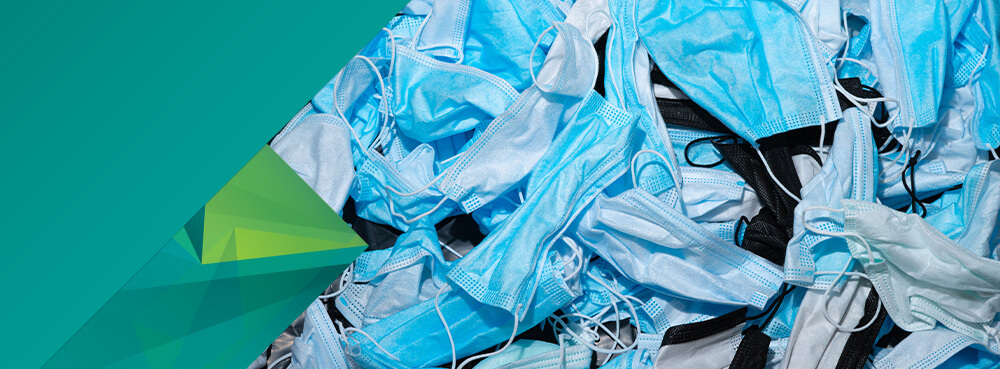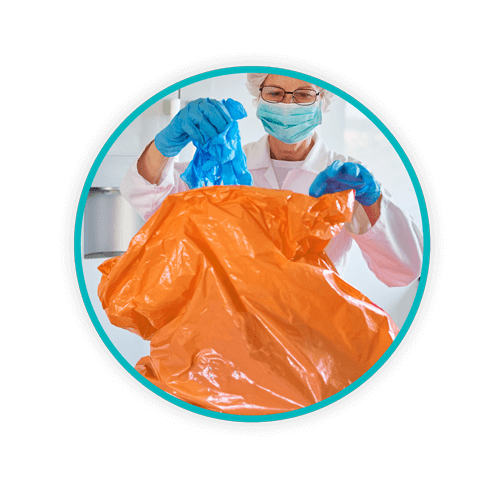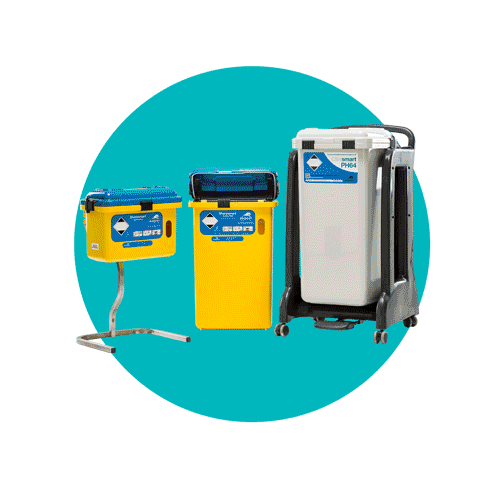Clinical Waste Disposal Management Post-COVID

IN THIS BLOG:
2 / Clinical waste reclassification
3 / Aggressive waste segregation
4 / Access to appropriate colour-coded bins
6 / Site specific clinical waste disposal decisions
7 / Support can help you meet your clinical waste disposal challenges
Introduction
During a pandemic, hospitals frequently become infection hot zones. This can be due to a proliferation of disease within the local community, or sometimes because patients are transferred from other locations. Nevertheless, when a hospital becomes the nucleus of highly contagious pandemic activity, vigilance surrounding clinical waste management skyrockets.
Increased oversight and more stringent procedures does not mean that the clinical waste disposal standards were not effective before the outbreak – the atypically contagious Covid-19 pathogen simply demanded more attention. This meant increased Personal Protective Equipment (PPE), more aggressive sanitation, additional barriers for social distancing, increased signage, and a host of additional protocols.

Clinical waste reclassification
The recommendations for clinical waste classification have changed in response to the transmissibility of the SARS-CoV-2 strains. This led administrators and staff to take the more cautious approach of treating PPE as infectious clinical waste and discarding it in orange bags. The NHS issued guidance for clinical and general waste disposal in light of the increase in waste being sent for heat recovery.
Enhanced waste segregation
Clinical waste reclassification is an essential component of waste segregation. We segregate clinical waste from general waste, and further segregate clinical waste for appropriate handling, treatment, and disposal. The rapid spread of SARS-CoV-2 created greater urgency for waste segregation as reducing the potential for contamination was of the utmost importance. Though clinical waste segregation is always in force in medical settings for budgetary and general health purposes, during a pandemic the need intensifies.
Access to appropriate colour-coded bins
Clinical waste disposal management starts with having the correct bins, bags, and waste units. Infectious waste bins are designated for waste that must be sterilised. This might include sharps or PPE worn while working in direct contact with infected patients, as well as anatomical waste – human tissue – that must be sent for incineration regardless of whether it is believed to be infectious.
Additional clinical waste categories include: 
- Purple Lid – Cytotoxic and cytostatic waste. This category of clinical waste is considered hazardous though not infectious. This waste stream is reserved for medicines that encourage cell death, as with cancer treatments. Moreover, instruments used to administer such medicines are also classed as cytotoxic clinical waste.
- Yellow Lid - Sharps waste contaminated with medicinal products that are not cytotoxic or cytostatic. This type of waste can be with infectious or non-infectious – correct segregation is of the utmost importance.
- Orange Lid - Non Medicinal Sharps – healthcare and non-medical infectious sharps waste that is contaminated with bodily fluids, but not contaminated with medicinal products.
- Blue Lid - non-hazardous pharmaceutical waste such as out of date medicines, in their original packaging.
- Green bin – Single use medical devices and instruments. Healthcare metal waste such as scalpels and speculums that can be sent for treatment and recovery.
-
Red bin – anatomical waste.
Additional signage
Education and training, particularly during periods of uncertainty and disruption, are essential. Merely acquiring the appropriate resources and provisions won’t automatically ensure compliance – the staff must be trained continuously. Appropriate signage is an important educational tool, ensuring that the correct waste procedures are located in key areas and unavoidable. This is not only to ensure that proper procedures are followed, but also to inform patients of the correct clinical waste disposal and handling procedures, giving them confidence that their clinics and hospitals are being vigilant.
Site specific clinical waste disposal decisions
Broad guidance regarding clinical waste disposal and handling allows staff members and volunteers in healthcare settings to easily understand approved practices across hospitals and clinics. This helps streamline training, and it makes important public health guidelines simple for the public to follow. During a pandemic where different regions experience different levels of infection, adopting more strict measures that might not be considered standard are possibly necessary to benefit infection control.
How the dedicated support of Sharpsmart can help hospitals and clinics meet their clinical waste disposal challenges
Evolving guidance surrounding clinical waste disposal can be challenging to understand and adopt, particularly during an international pandemic. Sharpsmart partners with hospitals and clinics to optimise their clinical waste management, while ensuring they are fully compliant with the latest waste disposal and public health guidelines. To request a quote or learn more about our suite of products and services, please visit our information page.
